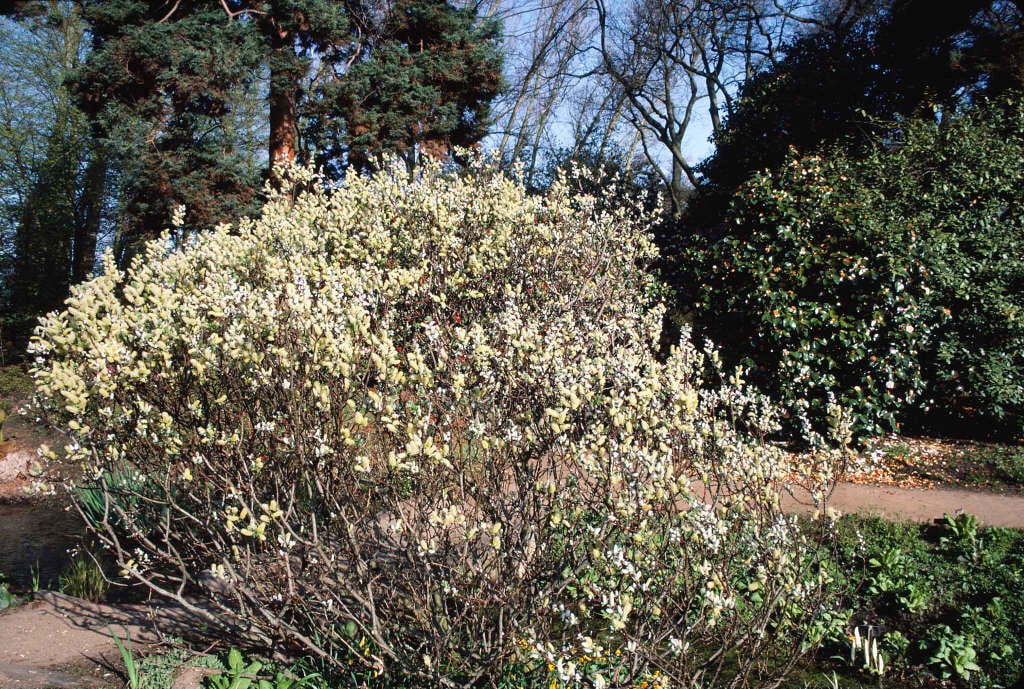Salix hastata 'Wehrhahnii' (m)

halberd willow 'Wehrhahnii'
A slow-growing, small, spreading deciduous shrub about 1m tall, with erect, purple-brown stems bearing silvery-white male catkins in early spring, later yellow, followed by bright green leaves

Buy this plant
Size
Ultimate height
1–1.5 metresTime to ultimate height
20–50 yearsUltimate spread
0.5–1 metresGrowing conditions
Moisture
Moist but well–drained, Well–drainedpH
Acid, Alkaline, NeutralColour & scent
| Stem | Flower | Foliage | Fruit | |
| Spring | Brown Purple | White Yellow | Green | |
|---|---|---|---|---|
| Summer | Brown Purple | Green | ||
| Autumn | Brown Purple | Green | ||
| Winter | Brown Purple |
Position
- Full sun
- Partial shade
Aspect
South–facing or West–facing or East–facing
Exposure
Exposed or Sheltered Hardiness
H6Botanical details
- Family
- Salicaceae
- Native to GB / Ireland
- No
- Foliage
- Deciduous
- Habit
- Bushy
- Genus
Salix are deciduous shrubs and trees of diverse habit, with simple leaves and tiny flowers in catkins, male and female usually on separate plants. Some are valued for their brightly coloured winter shoots, others for their foliage or showy male catkins
- Name status
Accepted
How to grow
Cultivation
A small, slow growing shrub for sun or partial shade
Propagation
Propagate by softwood cuttings in early summer or hardwood cuttings in winter
Suggested planting locations and garden types
- City and courtyard gardens
- Coastal
- Cottage and informal garden
- Wildlife gardens
- Flower borders and beds
Pruning
Pests
May be susceptible to aphids, caterpillars, leaf beetles, sawflies, willow scale
Diseases
May be susceptible to willow anthracnose, scab, canker, honey fungus and rust
Get involved
The Royal Horticultural Society is the UK’s leading gardening charity. We aim to enrich everyone’s life through plants, and make the UK a greener and more beautiful place.